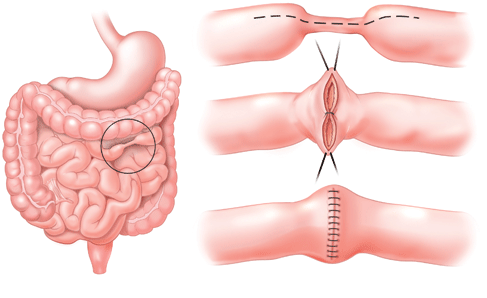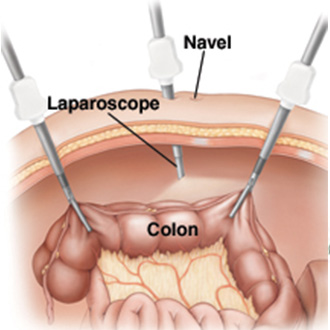In case strictures are small stricturoplasty can be done preserving the bowel

Stricturoplasty

Why is small intestine resection surgery needed for Crohn’s disease?
In the case of long strictures or several strictures very close to each other, it becomes impossible to perform plastic surgery. That is the reason the patient needs to go for resection surgery for permanent removal of the damaged section.
How is small intestine resection surgery done?
The surgeon generally starts with looking at the damaged sections of small intestines and then removes them. After the removal of the damaged section, the two healthy ends of the intestine are sewed together, the process is known as anastomosis.
One can choose to perform laparoscopic surgery which is a minimally invasive surgical procedure. Just by doing small incision a surgeon can reach out to the section of the small intestines’ for the removal of damaged sections.

Recovering from small intestine resection surgery
The recovery depends on many things also the recovery time varies depending on the health of the patient pre- and post-surgery. On average people spend around six days in the hospital, full recovery can take up to four or six weeks after resection surgery.
Possible complications of small intestine resection surgery
Risks that are included with any abdominal operation should be discussed with the surgeon. Also, you need to ask if any other risks are depending on your health condition.
Risk of infection near the incision site
Since the small intestine absorbs nutrients from food there are chances of a patient suffers malnutrition if a large part of the small intestine is removed.
May become prone to diarrhea, cramping and abdominal pain for six to 12 months after surgery as your bowel adjusts to its new size.
Anastomotic leak is a risk where there is a chance of leakage where the two healthy ends of the intestine are sewed together.
Things to know about small intestine resection surgery
It is a common surgical process that is used to treat patients suffering from the stricture of the small intestine.
Patients after the surgery enjoy their daily life like they used to before the surgery.
There might be a chance of getting Crohn’s disease again at the anastomosis (where the healthy ends of the bowel are re-joined)
The terminal ileum is the last part of the small intestine and is the most common area to be treated for by using resection surgery. Also, removal of ileum makes a person prone to the deficiency of vitamin B12 as ileum is known for absorbing vitamin B12.
